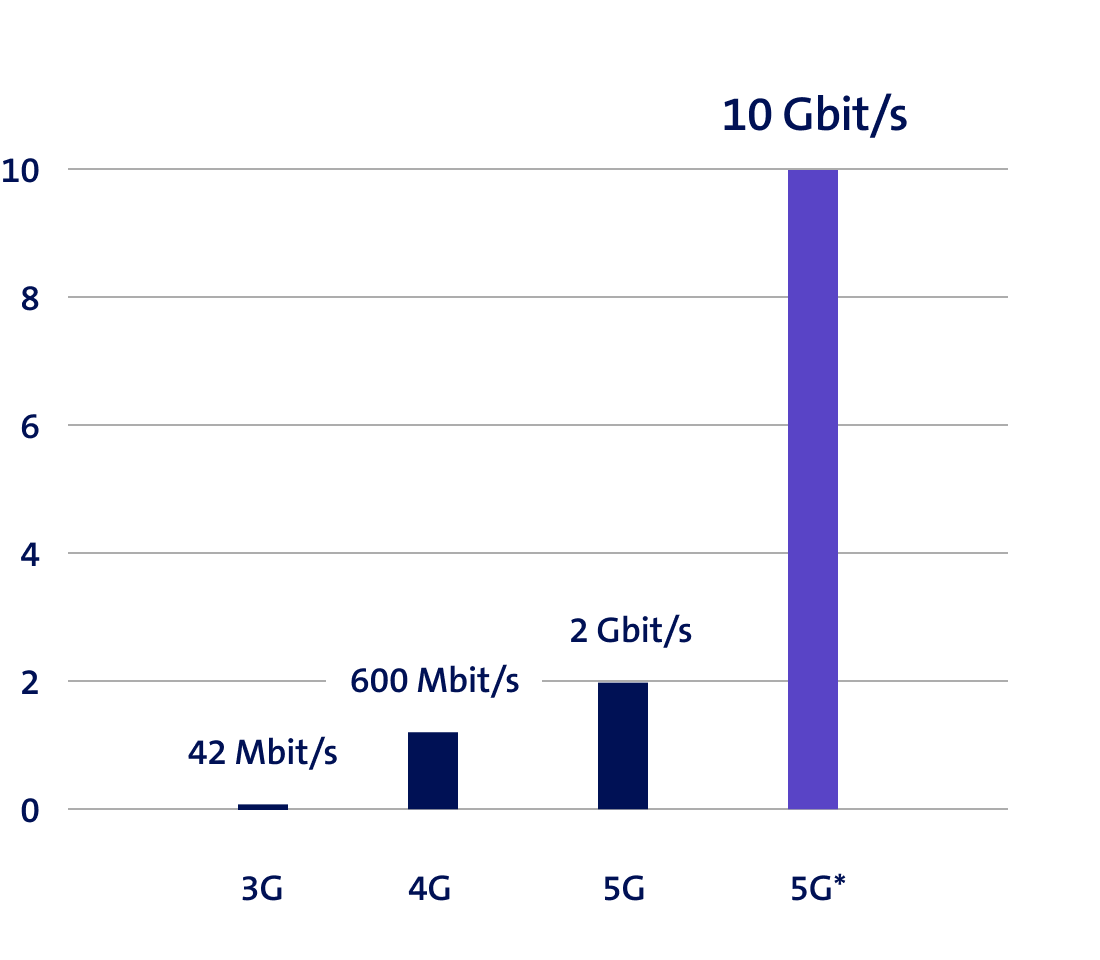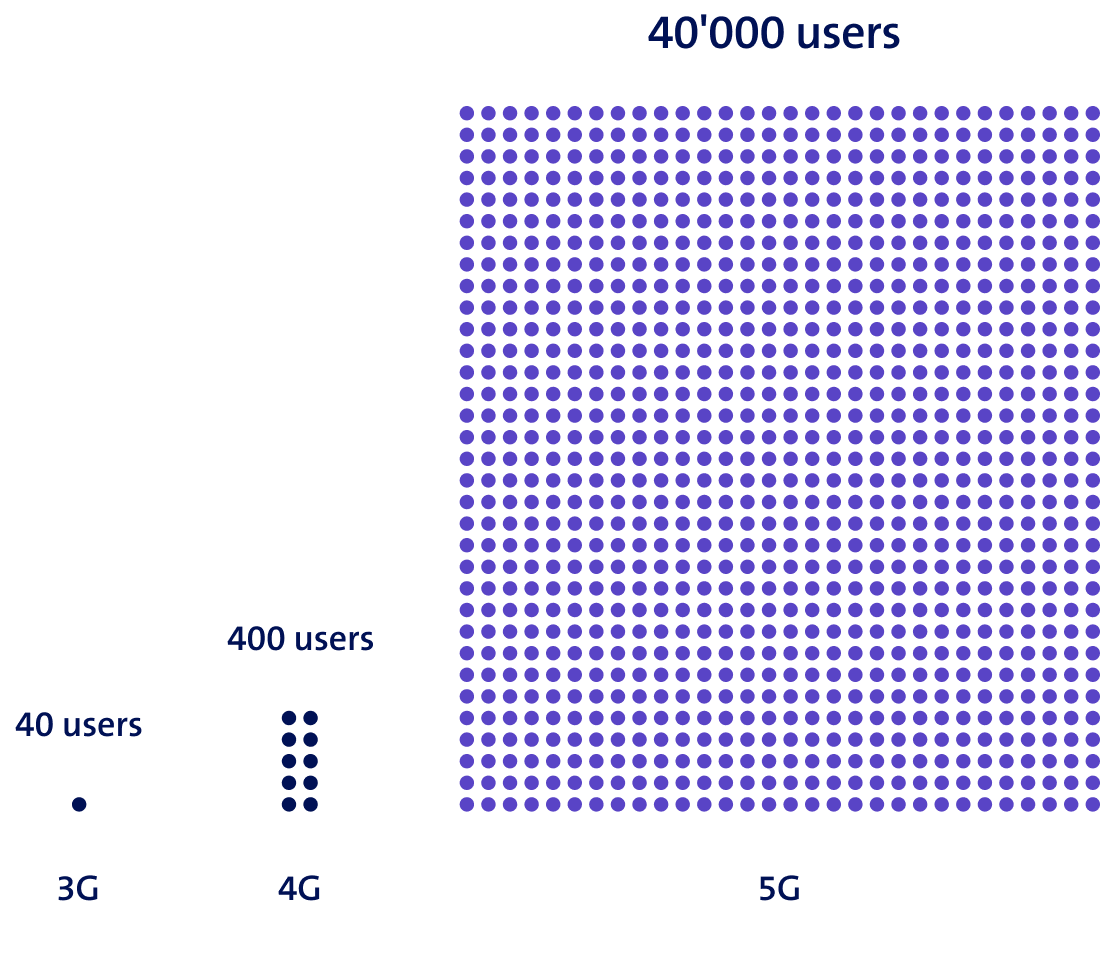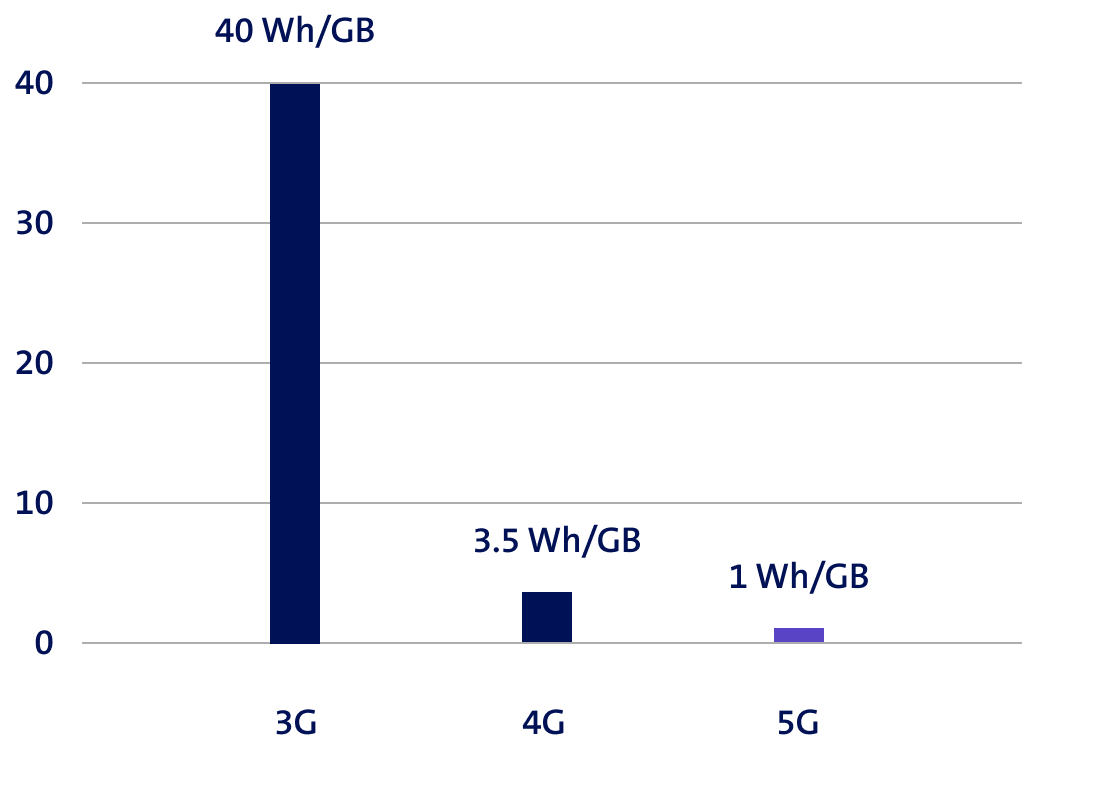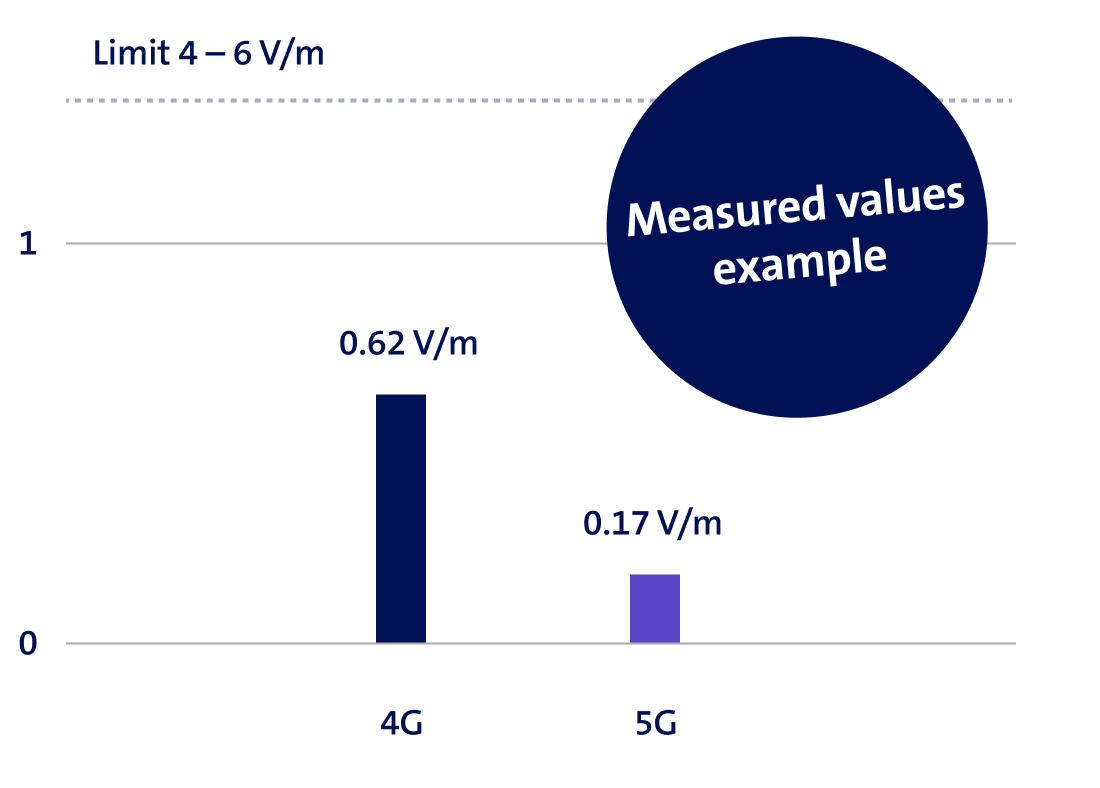Swisscom provides 5G mobile coverage to 99% of the Swiss population. The very first generation of 5G devices only supports one frequency band with 5G (N78, 3.6 GHz), so these devices can only use 5G+. Nonetheless, these smartphones are compatible with the latest 4G standards, thus ensuring that there are hardly any limitations in the network service.
Ready together for new opportunities with 5G.
5G long since heralded the future of mobile communication. And thanks to Swisscom, Switzerland was the first country in Europe to adopt it. With 5G, mobile digital experiences can be on a par with high-speed Internet at home. We all benefit from this. In our daily lives. At work. And in our free time.
The best network.
Even better with 5G.
Even in its first expansion stage, the fifth mobile generation already represents a quantum leap in technology. 5G allows us to enjoy even better applications in better quality. Streaming, gaming, meeting: whenever and wherever, no matter how many others are doing the same thing at the same time.
More speed

Each generation of mobile communication has brought ever greater download speeds in several expansion stages.
* Potential maximum future download speed
More capacity

The number of simultaneous mobile users per transmitter is limited.1 When there are a lot of users, this can lead to disruption when switching from one mobile cell to another, such as on a train or on the motorway.
We have been providing 99% of the Swiss population with 5G on the first 5G network in Europe since 2021. With 5G+, we are currently bringing even more speed to Switzerland’s best network.
The Swisscom network has been the undisputed winner in countless network tests for years. And since its launch in 2019, our 5G network has also been a front-runner.
With 5G, data transmission response times are reduced to a few milliseconds. This is crucial, for example, for industrial production, robotics or real-time applications.
The most sustainable network. Even more sustainable with 5G.
Data transmission in mobile communications uses electromagnetic fields. The adaptive antennas that are newly deployed with 5G transmit directly towards the devices being used, with hardly any signals emitted in other directions. This reduces the amount of radiation emitted and increases energy efficiency.
Less energy consumption

It takes significantly less power to transmit 1 GB of data with 5G than it does with previous mobile technologies.
Lower radiation levels
The measured values for 4G and 5G in this example come from a field study conducted by OFCOM in 2022. All the measurements from this study show that the average value of the measured field strength is lower for the adaptive antennas used for 5G than it is for the conventional antennas used for 4G, at the same transmission power. The limit is the precautionary installation limit value for places of sensitive use. Detailed information and study2
A study by the University of Zurich and Empa has shown that 5G reduces energy consumption in the network and on devices and has positive effects overall on climate protection.
Several Federal Government studies from 2022 confirm that the new adaptive transmission technology of 5G improves sustainability of the mobile network.
The radiation emitted by our mobile communication systems is well below the legal limits. In addition, in special protection areas, limit values in Switzerland are up to 10 times stricter than those recommended by the WHO.
New transmission technology
We use the latest transmission technology for 5G: adaptive antennas transmit targeted signals to active end devices such as smartphones or laptops. Almost no signals are transmitted in other directions, significantly reducing overall radiation levels and ensuring maximum capacity in the network.
Further topics
Frequently asked questions
Answers to the most important questions about 5G.
How fast is 5G where I live?
Is my smartphone compatible with 5G?
Is 5G included in my subscription?
Does the Internet Booster support 5G?
What are the benefits of 5G?
Is 5G harmful to health?
What’s the difference between 5G and 5G+?
Why can’t I get reception on my 5G smartphone everywhere in Switzerland?
Why is the speed slow despite the 5G symbol?
Mobile technologies in a nutshell
Links
Federal Council report: Sustainable mobile phone network (2022)(opens in new tab)
FOEN report: Monitoring report on non-ionising radiation (2022) (German)(opens in new tab)
OFCOM report: Electric field strengths of mobile phone antennas (2022) (German)(opens in new tab)
Federal platform on 5G(opens in new tab)
FOEN NIR monitoring: NIR exposure measurements (German)(opens in new tab)
Empa study: How does 5G affect the climate?(opens in new tab)
2022 – the year of federal reports on mobile communications
Sotomo study: Mobile data usage in Switzerland 2010–2021 (German)(opens in new tab)
1 The capacity calculation is based on the assumption that the devices of the specified number of users are connected to the same mobile cell at the same time and achieve the same average data throughput. Depending on the source (and underlying data throughput), 5G can connect 100 to 1000 times more devices or users compared with 4G.
2 Between autumn 2021 and spring 2022, the Federal Office of Communications (OFCOM) conducted an extensive field trial on mobile network radiation emissions. The example shows the average values for 5G (frequency band 3580–3700 MHz: 0.17 V/m) and 4G/LTE (frequency band 1805–1880 MHz: 0.62 V/m). For this example, measurements were taken from the roof of a bicycle shed on the premises of the Federal Office of Public Health (FOPH) in Liebefeld, Switzerland. All measurements from the field trial confirmed what was already known – that, overall, radiation levels measured from adaptive antennas (5G) are significantly lower than those from conventional antennas (3G and 4G). The measurements also show that the radiation levels are far below the precautionary low installation limit values of 4–6 V/m, which apply to places of sensitive use. And these are only a fraction of the frequency-dependent exposure limit values of 28–61 V/m.
